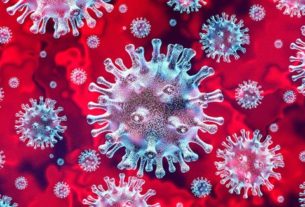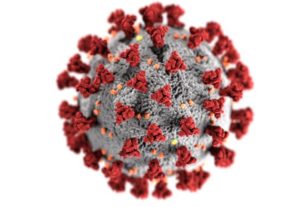WORLD HEALTH ORGANIZATION
Background
The Eid al Adha is a festival marked by social and religious gatherings where Muslim families and friends unite to pray together and give alms, especially in the form of sacrificed animal meat.
The COVID-19 virus spreads primarily by human-to-human transmission of secretions of saliva and respiratory droplets, which are produced when an infected person coughs, sneezes, speaks, or sings. Infection can also occur when individuals touch contaminated surfaces and then the eyes, nose or mouth before cleaning their hands.
There is also evidence of COVID-19 transmission at the human-animal interface. Current evidence suggests that humans infected with SARS-CoV-2 can infect other mammals, including dogs, cats, and farmed mink. However, it remains unclear whether or not these infected mammals pose a significant risk for transmission back to humans. Nevertheless, other zoonotic diseases are associated with livestock and have resulted in disease outbreaks.
Several countries have implemented physical and social distancing measures aimed at interrupting transmission by reducing interaction between people, such as the closing of mosques, monitoring of public gatherings and other restrictions on movement and gatherings. These measures are fundamental control mechanisms to control the spread of infectious diseases, particularly respiratory infections, associated with large gatherings of people. These measures are gradually relaxing in most countries where the virus has been brought under control; but, in some situations, increases in cases have been subsequently observed.
Increased numbers of COVID-19 cases associated with and in parallel to Ramadan activities this year, particularly during family visits, congregate prayers and gatherings have been seen across countries in the Eastern Mediterranean Region.
Social and religious gatherings and animal slaughter are central to Eid al Adha. Hence, preventive measures, including risk communication and community engagement (RCCE) strategies directed towards individuals, families, communities and governments are required to promote behavioural messages and encourage adoption of key measures to prevent and minimize the spread of the infection.
Purpose
This document highlights public health advice for social and religious practices and gatherings during Eid al Adha that can be applied across different national contexts.
Informed decision making on conducting social and religious gatherings
Cancelling social and religious gatherings should be seriously considered. WHO recommends that any decision to restrict, modify, postpone, cancel, or proceed with holding a mass gathering should be based on a standardized risk assessment exercise, taking into account current epidemiological trends, capacities, and resources. These decisions should be part of a comprehensive approach taken by national authorities to respond to the pandemic.
If social and religious gatherings are cancelled, virtual alternatives using platforms such as television, radio, digital and social media can be used instead where possible. If Eid al Adha gatherings are allowed to proceed, measures to mitigate the risk of COVID-19 transmission should be implemented, such as those listed below.
In addition, a robust RCCE strategy is essential to explain to the population the rationale, as well as to provide clear instructions for adhering to national policies or measures surrounding Eid al Adha. The strategy should also include the active engagement with communities via tailored and innovative approaches and proactive messaging on the importance of practicing physical distancing and healthy behaviours during the pandemic, using diverse media platforms.
Overarching considerations
Advice on physical distancing
Practice physical distancing by strictly maintaining a distance of at least 1 metre between people at all times.
If physical distancing cannot be achieved, wearing a fabric mask is recommended. It is critical to follow best practices on how to wear, remove and dispose of masks, and performing hand hygiene after removal.
Use culturally and religiously sanctioned greetings that avoid physical contact, such as waving, nodding, or placing the hand over the heart.
Prohibit large numbers of people gathering in public places associated with Eid activities, such as markets, shops and mosques. If allowed, a mechanism should be in place to regulate such activities and avoid gathering of people.
Restrict social gatherings, both public and private, and encourage the use of technology for meeting and greeting people to mitigate transmission.
Consider closing of entertainment venues, particularly indoor venues, during Eid to avoid the mass gathering of people.
Advice to high-risk groups
Urge people who are feeling unwell or have any symptoms of COVID-19 to avoid attending events and follow the national guidance on follow-up and management of suspected cases of COVID-19.
Urge individuals aged 60 years and older and anyone with pre-existing medical conditions (such as diabetes, hypertension, cardiac disease, chronic lung disease, cerebrovascular disease, chronic kidney disease, immunosuppression and cancer) not to attend gatherings, as they are at a higher risk of severe disease and death from COVID-19.
Mitigation measures for physical gatherings
The following measures should be applied to any gathering occurring during Eid al Adha, such as prayers, communal meals or banquets.
Venue for prayers
Consider holding the event outdoors if possible; otherwise, ensure that the indoor venue has adequate ventilation and air flow.
Shorten the length of the event as much as possible to limit potential exposure between people.
Give preference to holding smaller services with fewer attendees more often, rather than hosting large gatherings.
Adhere to physical distancing among attendees, both when seated and standing, through creating and assigning fixed places, including when praying, performing wudu (ritual ablutions) in communal washing facilities, as well as in areas dedicated to shoe storage.
Regulate the number and flow of people entering, attending, and departing from worship spaces, or other venues to ensure safe distancing at all times.
Consider measures to facilitate contact tracing in the event that an ill person is identified among the attendees of the event.
Encourage healthy hygiene
Ensure that hand washing facilities are adequately equipped with soap and water and provide alcohol-based hand-rub (at least 70% alcohol) at the entrance to and inside mosques.
Ensure the availability of disposable tissues and bins with closed lids and disposable liners, and guarantee the safe disposal of waste.
Encourage the use of personal prayer rugs to place over carpets.
Provide visual displays of advice on physical distancing, hand hygiene, respiratory etiquette, and general messages on COVID-19 prevention.
Frequently clean worship spaces, sites, and buildings
Enforce routine cleaning of venues where people gather before and after each event, using detergents and disinfectants.
Keep the premises and facilities clean and maintain general hygiene and sanitation.
Frequently clean often-touched objects such as doorknobs, light switches, and stair railings with detergents and disinfectant.
Animal-Human Interface and Sacrificial Slaughter
The source of the SARS-CoV-2 virus has not yet been identified. Understanding which animal species are most susceptible to the virus is important in discovering potential animal reservoirs to mitigate transmission and future outbreaks.
According to common safe practices when handling meat, countries should take strict measures around the selling and slaughtering of animals and the distribution of meat while ensuring that national food safety and hygiene regulations are enforced.
Animal Management
Encourage and enforce proper procurement of animals to abide by safety standards, especially for importation of livestock.
Allocate enough space in dedicated enclosures to safely house an increased influx of animals and avoid unsanitary overcrowding in anticipation of the slaughter.
Do not slaughter animals that appear sick, and plan for dedicated space for quarantine and isolation of suspected ill animals.
Perform adequate veterinary checks for livestock to mitigate other zoonosis and infection.
Always procure animals through a trusted official procedure.
Processing Facilities
Discourage slaughter at home and increase the number or capacity of slaughter facilities to encourage best practices and ensure safety and physical distancing standards, for both public and staff.
Slaughter facilities and equipment should be properly maintained and kept hygienic.
Inspection of facilities should take place periodically to uphold standards.
Ensure that facility staff are practicing physical distancing, hand hygiene, proper cough etiquette, and are using adequate protective measures while processing animals. Staff should be aware of COVID-19 signs and symptoms.
Waste management for unused animal by-products should be in place and facilities should have a contingency plan in the event of contamination or an outbreak.
Marketplace
Provide basic infrastructure to promote sanitation, such as toilet and hand washing facilities, safe water supplies, cleanable walls and floors, and drainage.
Ensure sanitation of stalls and equipment.
Ensure that all waste materials, including solid and liquid waste, are collected, and disposed of regularly from the market, ideally at least once daily.
Protect market areas and food from environmental hazards, including rain, sun, dust, insects, rodents and other animals.
Charity
When the faithful distribute
meat, consider the physical distancing measures in place and encourage
nominating one household member to perform and order the sacrifice, preferably
through centralized agencies or services. To avoid the crowded gathering
associated with distribution of meat, consider using centralized entities,
agencies, and institutions, which should adhere to physical distancing
throughout the whole cycle (collecting, packaging, storing and distribution).
Acknowledgment
Thanks to the WHO Regional Office for the Eastern Mediterranean for leading the development of this guidance.
WHO continues to monitor the situation closely for any changes that may affect this interim guidance. Should any factors change, WHO will issue a further update. Otherwise, this interim guidance document will expire 2 years after the date of publication.



